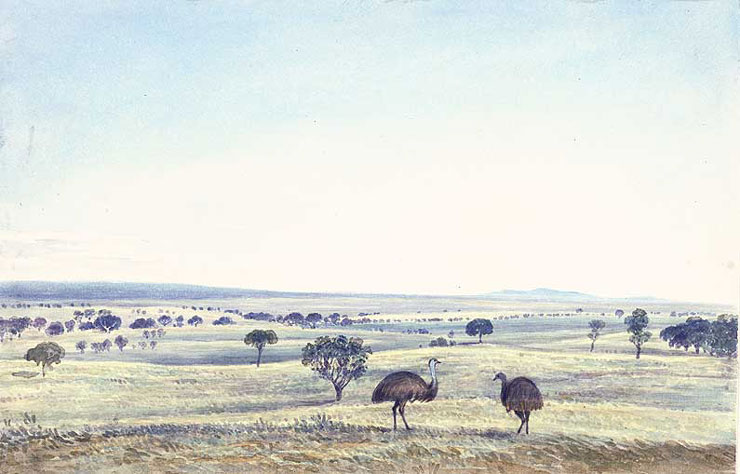 'Panorama of Challicum, No. II', c1850
'Panorama of Challicum, No. II', c1850
TLF ID R3256
This is a watercolour measuring 16 cm x 24.5 cm showing the Victorian squatting runs Challicum and Yalla-y-poora from a south-south-westerly viewpoint. In the midground is the yellow grassland of the Fiery Creek plains, gum trees dot the countryside and the distant bluish mountain is Mount Weejort. Two emus are shown in the foreground. The artist, Duncan Cooper, included this painting as the tenth watercolour in his field sketchbook and inscribed the title 'Panorama of Challicum, No. II' on its mount. The watercolour is the second of nine panoramas that together form a cyclorama of the Challicum area in south-western Victoria.
